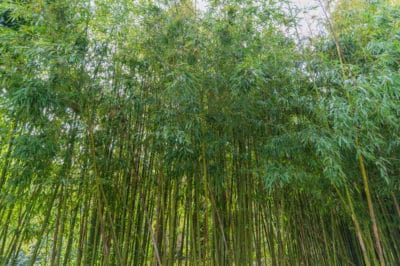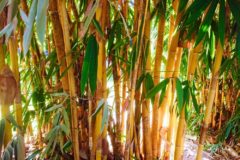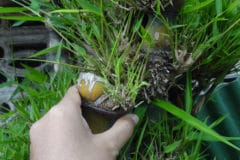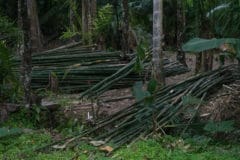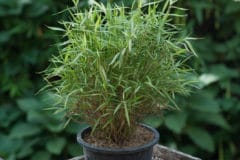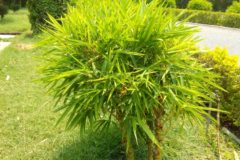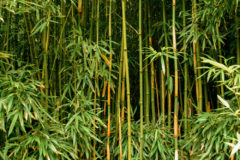Why Bamboo Grows So Fast
Bamboo is a fast grower for two reasons. First, a bamboo culm has all of its cells before it ever pokes out of the ground. To grow, it need only fill those cells with water. Second, a mature root mass can put all its energy into growing more culms. The culms only grow for about 60 days and then the plant turns to building more root mass.
Running Bamboo
Bamboo is actually a giant grass and it grows like grass. In the case of running bamboo, stolons spread underground – for a comparison, think of Bermuda grass. New culms spring up along the full length of each stolon. The culms themselves grow for a 60-day period in early spring and summer. They attain their full height and diameter in that time frame.
Clumping Bamboo
Unlike running bamboo, clumping varieties mimic the growth pattern of fescue. They are also similar to an iris, which starts from a single rhizome and gradually adds additional rhizomes. Each rhizome sends up a single culm. This difference in growth patterns is why clumping bamboo is a slower grower and easier to manage than the running types.
Most Invasive Bamboos
Phyllostachys species are hands-down the most invasive bamboos. P. aurea is even illegal in some states because of its growth habit. However, these can also cause problems:
- Chimonobambusa marmorata – marbled bamboo.
- Sasa veitchii – Japanese bamboo, Veitch’s bamboo or kuma bamboo.
- Arundinaria gigantea – American native in southeastern states.
- Sasa palmata – broad-leaf or broad-leaved bamboo.
The Growing Environment
Like most plants, bamboo is more likely to be invasive if grown in its preferred habitat and given plenty of good soil, water and fertilizer. Some bamboo species can grow in USDA Zones 5 and above, but a bamboo that isn’t cold-tolerant is less likely to become invasive in a cold climate. The same applies to bamboo that prefer temperate climates that are grown in desert conditions.
Controlling Bamboo
After choosing the right variety, barriers and regular maintenance are the most important aspects of controlling bamboo. Contain your bamboo with a wall, trench – to make root-pruning easier – or barrier material. You can also grow it in a container. Running bamboos must be root-pruned each year during the dormant season in late fall and winter. Root-prune clumping bamboos every other year.
